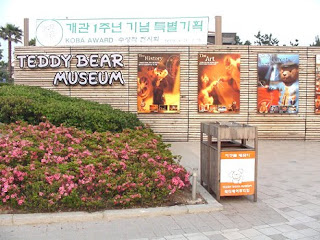The Reliance Travel's Korea tour package that we've signed up covers several major locations in South Korea such as Jeju, Chuncheon, Icheon, Yongin and Seoul. I google for information of these major attractions recently to learn more about them before the trip next month. Herein is my research results.
CHAPTER 1: JEJU has a mild oceanic climate throughout the year with the smallest annual temperature range in the country. The hottest summer months averages no more than 34.7℃and no less than -1.5℃ for winter. It is the largest island in South Korea, which came into existence approximately 700 to 1,200 thousand years ago from a sub-sea volcano surfaced above the waters. Another volcanic eruption approximately 100 to 300 thousand years ago formed the Mt. Halla and it rises in the center of Jeju to 1,950m above sea level. The final volcanic eruption that happened approximately 25 thousand years ago created the crater lake, namely Baekrok-dam, at the summit of the Mt. Halla.
The island's nature is well preserved in its prehistoric state and one must visit Jeju to fully appreciate its scenic beauty and mystical myths surrounding the island. It is believed that 3 demi-gods emerged from Samsung-hyeol that is said to have been on the Northen slopes of Mt. Halla and subsequently became the progenitors of the Jeju people who founded the Kingdom of Tamna.
This beautiful island is one of the most visited honeymoon destinations, not just among the Koreans but honeymooners around the world. There are much to see and to do at Jeju. The Seongsan Ilchulbong (Sunrise Peak) and Yongdu-am (Dragon Head Rock) are some of the hot spots with scenic panoramic view for one to appreciate the beauty of mother nature. One can also explore the Mysterious Road (Dokkaebi Road) where cars roll uphill with the engine turned off.
Teddy Bear Museum (Up); Chocolate Museum (Down)
Alternatively, there are interesting museums that are fun and educational to visit such as the world renowned Teddy Bear Museum, tea museum and even chocoloate museum. Also don't forget to visit the Korea's National Folk Asset #188 i.e. Seongeup Folk Village at Seongeup and theme park such as the Jeju Miniature theme park.
0
In short, Jeju is definitely a "must-go" should you ever consider visiting South Korea one day. Well...at least I know I will o( ^ - ^ )o








.jpg)


